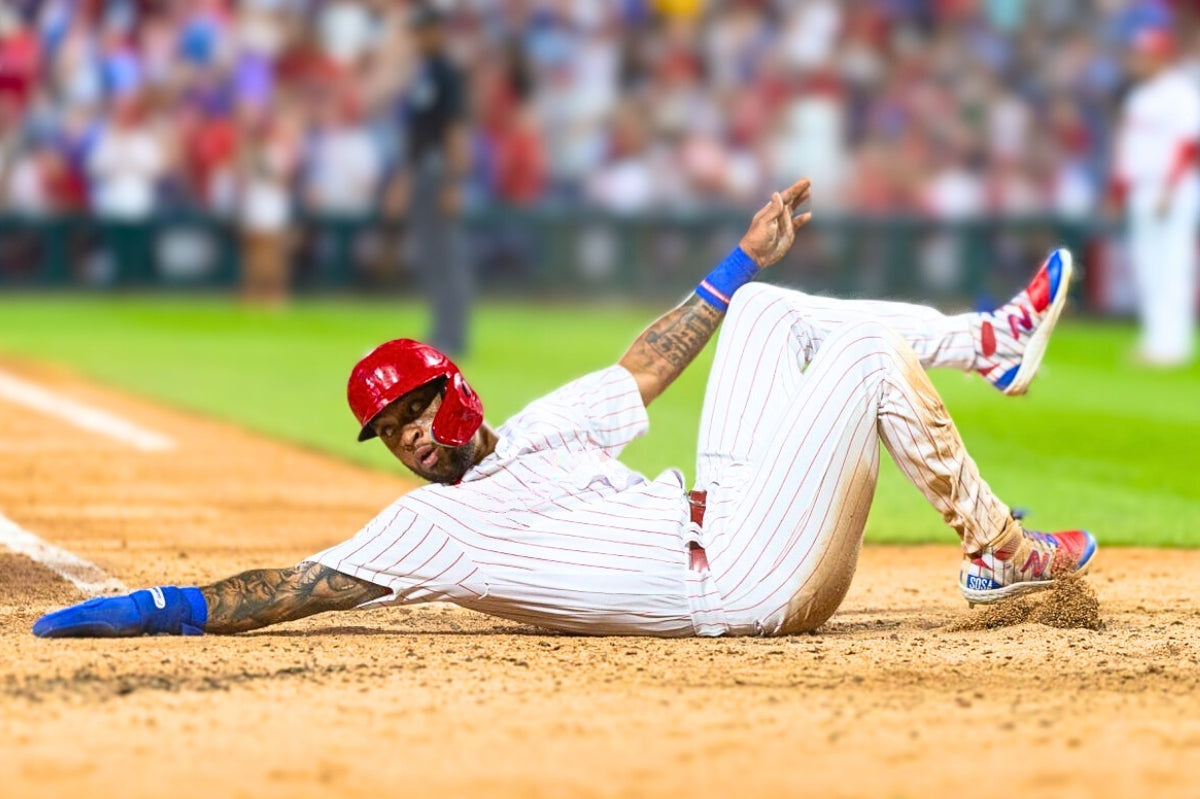Sliding is a crucial skill in baseball, often determining the success of base running and player safety. Mastering the art of sliding not only improves a player's ability to advance bases but also helps prevent injuries. Let's explore the key elements and techniques to execute effective slides on the baseball field.

Explore Different types of slides
Feet-First Slide: The feet-first slide is the bread and butter of base stealing. Players launch themselves towards the base, extending their legs to make contact while maintaining control and reducing the risk of injury. It's the go-to slide for players looking to secure a safe arrival at the bag without sacrificing speed or safety.
Head-First Slide: For those with a flair for the dramatic, the head-first slide is the epitome of daring. With eyes set on the prize, players dive headlong towards the base, hoping to beat the throw and avoid the tag with sheer speed and determination. While risky, it's a move that can turn heads and change games in an instant.
Hook Slide: The hook slide is the sneak attack of the sliding world. Players approach the base at an angle, hooking their leg around the bag while reaching out to touch it. This maneuver allows them to evade the tag with finesse, sliding past the base while maintaining contact and leaving defenders scratching their heads.
The Fundamentals of a Proper Slide
Timing is Everything: The first rule of sliding is timing. It's not just about sprinting towards the base and hoping for the best—it's about reading the play, anticipating the fielder's movements, and committing to the slide at precisely the right moment.
Stay Low and Lean: As you approach the base, remember to keep your center of gravity low and your body leaned forward.
Choose Your Slide: Depending on the situation and your personal preference, there are different types of slides to consider.
Drills for Improving Sliding Techniques
Slide and Stick Drill: Set up a base or a designated sliding area on a soft surface like grass or turf. Have players practice sliding into the base and focus on sticking the landing, maintaining balance and control as they come to a stop.
Timing Drill: Work on timing by practicing slides in conjunction with a coach or teammate simulating throws or ground balls. Players should focus on reading the play and initiating the slide at the optimal moment to avoid tags and reach the base safely.
Head-First Dive Drill: Set up a soft landing area such as a crash pad or foam mat. Have players practice diving headfirst towards the base, focusing on extending their arms and leading with their hands to maximize reach. Emphasize tucking the head and rolling upon contact with the ground to minimize the risk of injury.
Feet-First Slide Drill: Practice the feet-first slide by setting up a sliding mat or sliding base. Players should approach the base at full speed and focus on extending their legs towards the base while maintaining balance and control. Emphasize sliding through the base with momentum, using the legs to absorb impact and propel forward.
Hook Slide Drill: Set up cones or markers to simulate the path around the base. Players should practice approaching the base at an angle and hooking their leg around the bag while reaching out with their hand to touch it. Focus on maintaining balance and control while executing the slide and using momentum to carry past the base while maintaining contact.
Video Analysis: Record players performing slides during practice sessions or games. Review the footage to identify areas for improvement, such as timing, technique, and body positioning. Use the feedback to refine skills and make adjustments to sliding technique.
Reaction Drills: Have players practice reacting to various scenarios, such as balls in the dirt or unexpected plays in the field. This helps improve reflexes and decision-making skills, crucial for executing effective slides in game situations.
Fielding and Sliding Drill: Incorporate sliding into fielding drills by having players practice fielding ground balls and transitioning into a slide to make the play at a base. Emphasize quick transitions and proper technique to execute the slide smoothly while maintaining control of the ball.
Game Situation Drills: Set up game-like scenarios during practice, such as runners on base and specific game situations. Have players practice sliding in these scenarios to simulate real-game pressure and improve their ability to execute slides when it matters most.


